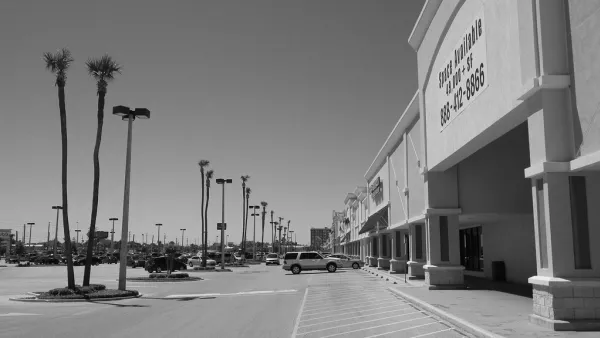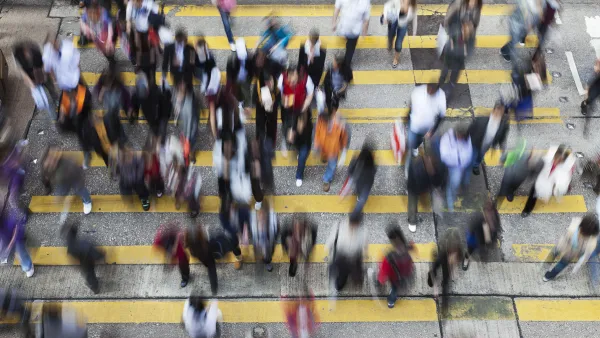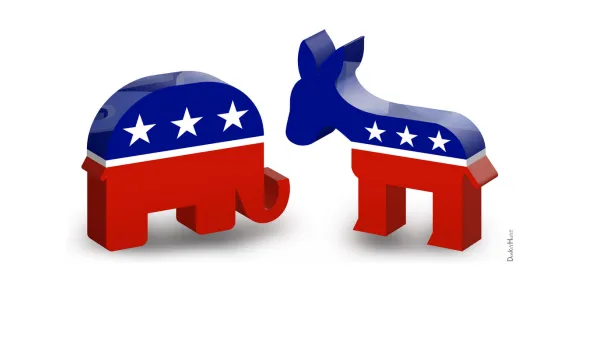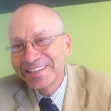Walkability
Does Walkability Equal Walking?
Using data from the Women’s Health Initiative, a new study reveals that a walkable environment may not be enough to get people to walk more.

Driven into Poverty: Walkable Urbanism and the Suburbanization of Poverty
David Moser pens a compelling essay that examines the ways in which sprawling auto-dependent land use patterns exacerbate poverty. As more low-income individuals and families are pushed to the suburbs, "this problem is gaining urgency."
Cleveland's Public Space Revolution
With new bike paths, regional trails, and renovated parks, Cleveland is catering to bikes and pedestrians, says Steven Litt. He explains how this "car town" is "undergoing a revolution in attitudes toward public space, city streets and walkability."

10-Year Study Confirms Public Health Benefits of Walkability
A newly published University of Melbourne study ten years in the making reveals that increased access to shops, parks, and other amenities increased walking and overall health.
An Elegant Guide to Walkability
The Spanish city of Pontevedra has developed an innovative, and attractive, map of pedestrian connections based on the color-coded subway maps common to cities around the world; burnishing its reputation as "a leader in walker-friendly urban policy."
A Guide to Creating Great Cities at Eye Level
The result of a collaborative effort between five editors and 43 professionals from around the world, a new open-source book documents the essential concepts and strategies for creating great cities at eye level - along the ground floor ("plinths").
Connections, Community, and the Science of Loneliness
Can urban form help address the loneliness that so often accompanies aging? In a new blog post, Hazel Borys examines some remedies for severed connections.
Using Pictures to Think About Cities
How does each of us perceive the city? Using photos of pedestrians in Seattle crosswalks and the highly walkable Las Ramblas in Barcelona, Chuck Wolfe challenges readers to think for themselves about what they see.
For Walkability, the Journey is as Important as the Destination
This Big City reviews a new book by urban designer Julie Campoli that explores the elements crucial to creating walkable places. "Simply having shops, services and venues within walking distance is not enough."
Is a New Approach Needed for Getting Kids to School?
Charles Marohn derides the conflicted approach to creating "Safe Routes to Schools" in the United States. With new data linking transport to school to educational outcomes, is it time to rethink the federal government's popular program?
3 Simple Ways to Make Streets More Walkable
Although leaders in the Twin Cities seem to agree on the need to improve the appeal of city streets for those on foot, turning those words into actions seems difficult. Bill Lindeke offers three easy solutions that don't involve touching the street.
Yes You Can (Get Groceries Without A Car)
Shopping for bulky items can be one of the challenges of living car free. Here are three of the best ways I've found for dealing with the problem.
'Obesity Warrior' Outlines Path to Increased Physical Activity
James Sallis, this year’s winner of the Bloomberg Manulife Prize for the Promotion of Active Health, discusses the obstacles to increasing opportunities for physical activity in our communities, and how to overcome them.
The Challenge of Bringing Walkability to America's 99 Percent
Kaid Benfield proposes not only more walkable neighborhoods in the United States, where a pedestrian is struck by a vehicle every 7 minutes, but also more walking to reverse the country's alarming obesity trend.
Marching Towards More Walkable Communities
Richard Florida interviews Jeff Speck about his new and highly praised book "Walkable City." The two authors discuss why cities should become more walkable to meet the needs of the "Walking Generation."
New Website Helps Create Walkable Communities
A new website, Walksteps.org, provides communities tactics for creating walkable communities.
Street Redesign Provides Path to Prosperity
An award-winning street redesign project in the Los Angeles exurb of Lancaster provides a case study in the value of retrofitting for walkability.
From 'Wasteland' to Mixed-Use 'Mosaic'
Alison M. Rice looks at the transformation of the Washington D.C. suburb of Merrifield, Va. from an industrial-suburban wasteland to a $542 million mixed-use development.

The Politics of Sidewalks
In the aftermath of the presidential election, an observation by the star statistician Nate Silver about the connection between sidewalks and voting patterns has been getting a lot of play. Robert Steuteville tries to depoliticize walkability.
Does Urbanism Correlate with Happiness?
Planning policies related to the economy and environment are easier to measure, but Hazel Borys asks, "how do we measure national happiness, well-being, and social capital as they relate to the way we plan our neighborhoods, towns and cities?”
Pagination
Urban Design for Planners 1: Software Tools
This six-course series explores essential urban design concepts using open source software and equips planners with the tools they need to participate fully in the urban design process.
Planning for Universal Design
Learn the tools for implementing Universal Design in planning regulations.
EMC Planning Group, Inc.
Planetizen
Planetizen
Mpact (formerly Rail~Volution)
Great Falls Development Authority, Inc.
HUDs Office of Policy Development and Research
NYU Wagner Graduate School of Public Service


































